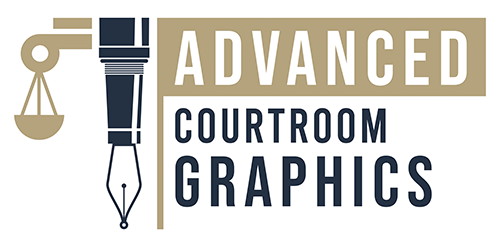The courtroom is more than just a place for arguments and witness testimonies. It is a space where visuals can make a significant difference in how jurors perceive a case. Demonstrative exhibits serve as powerful tools in this setting, bridging the gap between complex legal concepts and everyday understanding. The effectiveness of these visual aids cannot be overstated; they can sway opinions, clarify points, and even impact the final verdict.
The Impact of Visual Evidence on Juror Perception
Visuals hold incredible power. Studies show that people remember information better when it’s presented visually compared to just text or speech. Incorporating demonstrative evidence can enhance a juror’s understanding and retention of key case details. When jurors see, rather than just hear, the facts, they are more likely to engage with the material and form a clearer picture of the case.
Demonstratives: Beyond Mere Illustrations
Demonstrative exhibits are not just pretty pictures. They simplify complex information, making it accessible to laypeople. They can clarify timelines, highlight key evidence, and summarize intricate details that might otherwise confuse jurors. In many instances, a well-made demonstrative can transform dry legal jargon into compelling stories.
Setting the Stage for Effective Demonstrative Use
To maximize effectiveness, attorneys must strategically use demonstratives throughout the trial. This requires careful planning, creativity, and awareness of the audience’s needs. The goal is always to make the information resonate rather than overwhelm.
Types of Demonstrative Evidence: A Comprehensive Overview
Models, Diagrams, and Charts: Visualizing Complex Information
These types of demonstratives provide clarity on complicated concepts. For instance, a diagram might show the layout of a crime scene, helping jurors visualize events as they unfolded. Charts can effectively display statistics, making trends easier to understand.
Photographs, Videos, and Animations: Bringing the Case to Life
Imagery can evoke emotions and create lasting impressions. High-quality photographs can capture the essence of incidents, while videos can provide real-time perspectives. Animations allow jurors to see hypothetical scenarios, making it easier for them to understand the implications of the evidence being presented.
Interactive Demonstratives and Technology: Engaging the Jury
Technology offers exciting possibilities. Interactive displays can allow jurors to engage actively with the evidence. Virtual reality setups, for example, can immerse jurors in the settings being discussed, fundamentally changing their understanding of the case.
Legal Considerations and Admissibility
Authentication and Foundation Requirements: Ensuring Legitimacy
Before demonstratives can be introduced, they must be authenticated. This means showing they accurately represent what they claim. If an exhibit lacks a solid foundation, it risks rejection by the court.
Hearsay Concerns and Avoiding Improper Influence
Attorneys must also consider hearsay rules. Demonstratives must not convey statements made outside the court, which could lead to complications. Any presentation must focus solely on admissible evidence to maintain credibility.
Demonstrative Evidence vs. Substantive Evidence: Key Differences
It’s crucial to distinguish between demonstrative and substantive evidence. Substantive evidence supports claims and stands alone. In contrast, demonstrative evidence acts as a visual aid that helps explain or illustrate substantive evidence. Understanding these differences guides their effective use.
Strategic Use of Demonstratives for Maximum Impact
Crafting Compelling Narratives Through Visual Aids
The right visuals can create powerful stories. Jurors often respond better to emotional narratives that are clearly illustrated. Attorneys should weave demonstratives into their arguments to underscore points and create a cohesive narrative.
Tailoring Demonstratives to Specific Audiences and Cases
Not all jurors are the same. Tailoring demonstrative exhibits to the specific background and characteristics of the jury can enhance understanding. A medical case might require different types of visuals than a financial fraud case.
The Role of Expert Witnesses in Presenting Demonstratives
Expert witnesses often bridge the gap between the legal team and the jury. Their explanations paired with visual aids can clarify complex points, making it easier for jurors to grasp technical aspects of the case.
Case Studies: Real-World Examples of Demonstrative Success and Failure
High-Profile Cases Illustrating Effective Use
Numerous high-profile cases have showcased the effectiveness of demonstratives. For example, in a recent trial, a well-designed timeline helped jurors understand the sequence of events, which significantly impacted their decision-making process.
Examples of Demonstratives Backfiring: Lessons Learned
On the flip side, some demonstratives can backfire. In one instance, a confusing chart confused jurors instead of clarifying information, ultimately hurting the case. Attorneys must ensure that every visual serves a purpose and is easy to understand.
Analyzing Factors Contributing to Success or Failure
Success often hinges on clarity, relevance, and engagement. Demonstratives that align with the key arguments and present information simply are typically more effective. Conversely, overly complex or irrelevant visuals can detract from a case.
Conclusion: Optimizing the Use of Demonstrative Evidence for Winning Outcomes
Demonstrative evidence holds promise for legal professionals aiming to win cases. Focusing on key takeaways can bolster the effectiveness of visual aids:
- Understand Your Audience: Tailor visuals to juror backgrounds.
- Keep It Simple: Prioritize clarity in design.
- Integrate with Narrative: Weave visuals into storytelling for impact.
The Ever-Evolving Role of Visuals in Legal Proceedings
The role of visual aids in the courtroom is continuously evolving. As legal professionals embrace innovative technologies and methods, the impact of demonstrative evidence will likely grow in importance, shaping how cases are presented and decided in the future.
